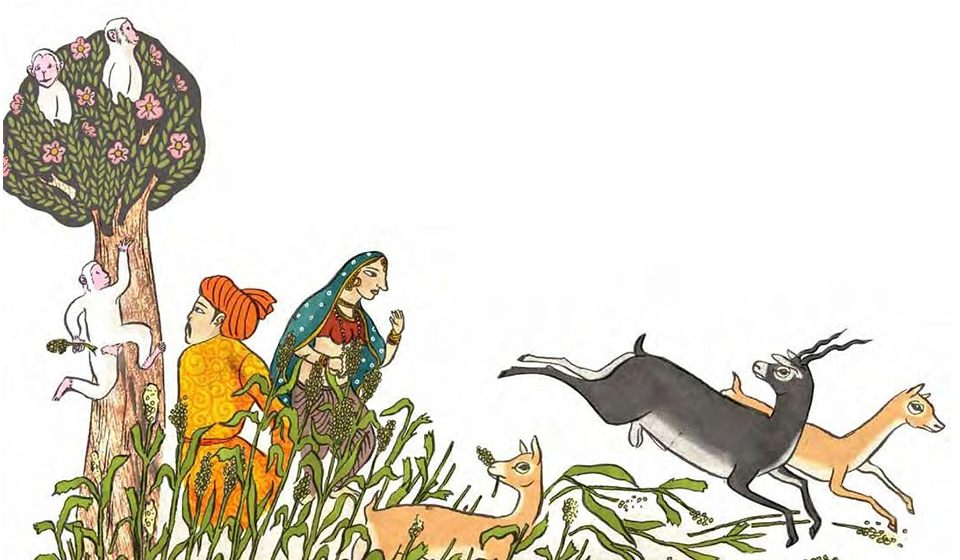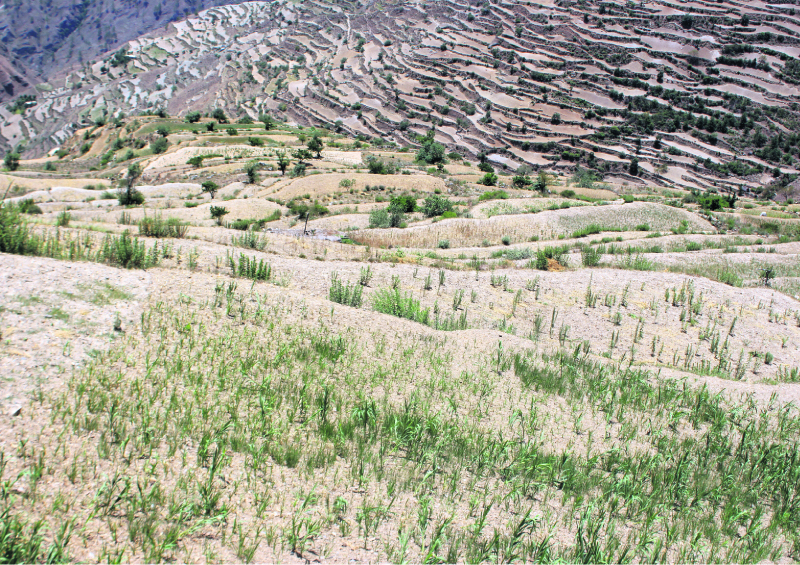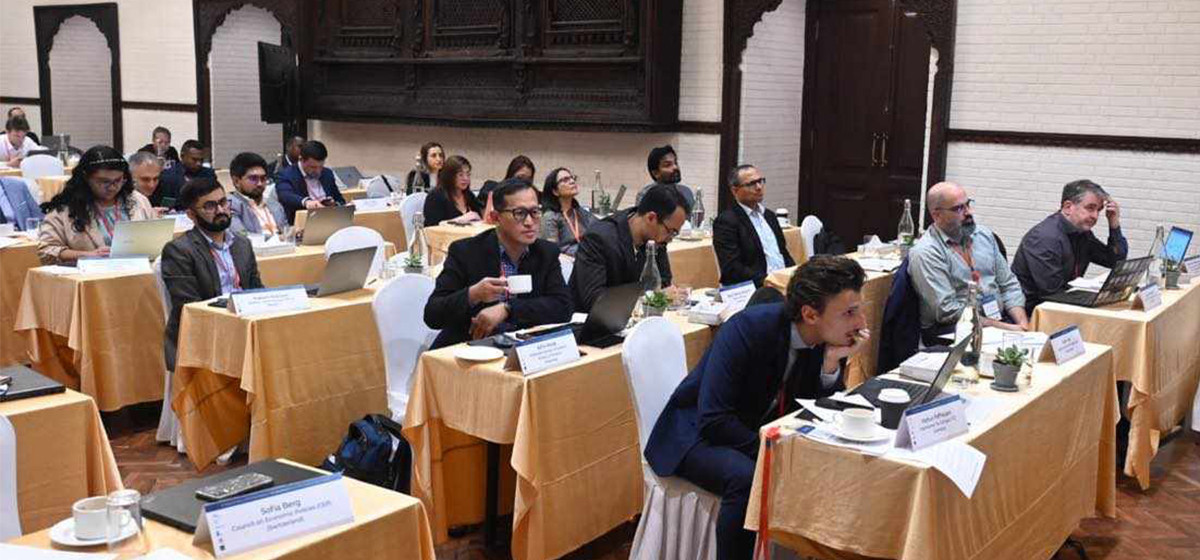
OR
Opinion
Wildlife Trafficking, Zoonoses and Public Health
Published On: September 3, 2023 08:45 AM NPT By: Dr Kedar Karki

Dr Kedar Karki
The author is a senior veterinary health management consultant. He runs Devine veterinary clinic in Sinamangal, Kathmandu.news@myrepublica.com
The practice of wildlife trafficking has led to the emergence of zoonotic diseases. Exotic wildlife trafficking is a multi-billion dollar industry that involves the removal and transportation of mammals, reptiles, amphibians, invertebrates and fish around the world. Wild animals are used for meat consumption as well as unconventional exotic pets, animal skin clothing, household trophy decorations, privately owned zoos, and traditional medicinal practices. Going back centuries, people in Africa, Asia, Latin America, the Middle East and Europe used animal bones, horns or organs for their healing effects on the human body.
At present, trophies of wild animals such as tigers, rhinos, elephants, pangolins and some reptile species are obtained through legal and illegal trade operations. For the purpose of cultural healing practices, approximately 975 different wildlife species have been legally and illegally exported out of Africa and imported into areas such as China, Japan, Indonesia, the United States, Russia, Europe and South America over the past decade.
Consuming or owning exotic animals can present unexpected and dangerous health risks. Many animals, wild or domesticated, suffer from infectious diseases and about 75% of wildlife diseases are vector-borne viral zoonotic diseases. Zoonotic diseases are complex infections that live in animals and can be transmitted to humans. The emergence of zoonotic diseases generally occurs in three stages. The disease initially spread through a series of spillover events between domestic and wildlife populations. Diseases are then spread through a series of direct contact methods, indirect contact methods, contaminated food, or vector-borne transmission. Following one of these transmission methods, the disease spreads rapidly to nearby human populations. Following the outbreak of the Covid-19 pandemic, said to have originated in the Huanan seafood wholesale market in Wuhan, China, Elizabeth Maruma Marama, acting executive secretary of the United Nations Convention on Biological Diversity, called for a ban on wildlife markets to prevent future outbreaks. Others have called for a global ban to enforce restrictions already in place, to reduce the risks affecting both animals and humans.
Direct contact transmission occurs when people have first-hand contact with contaminated feces, urine, water sources, or physical aids. Transmission of body fluids can occur either through contact with pathogens or open wounds. Indirect contact transmission occurs when humans interact within the habitat of an infected species. Humans are often exposed to contaminated soil, plants and surfaces where the bacteria are pathogenic. Contaminated food is transmitted when people eat infected plants, vegetables, fruits, or drink contaminated water. Often, these food and water supplies are contaminated by fecal droppings from infected bats, birds or monkeys. Vector-borne transmission occurs when individuals are bitten by infected parasites such as ticks or insects such as mosquitoes and fleas. Other factors in disease transmission include climate change, globalization of trade, rapid logging practices, increased irrigation, sexual activity between individuals, blood transfusions, and urbanization.
The exotic wildlife trade causes many infectious diseases that, if contracted, have potentially life-threatening consequences for human populations. Researchers believe it is not possible to eliminate the transmission of infectious diseases. Instead, it is important to build health screening services to reduce transmission rates between trafficked populations and infected wildlife species. Annually, 15.8% of human deaths occur from dangerous infectious disease outbreaks related to international trafficking of wild animals. Researchers, zoologists and environmentalists believe that about 44% of these deaths can be attributed to zoonosis-related diseases in economically poor countries in Africa.
People in Africa are at increased risk of exposure to and transmission of life-threatening infections. The continent is considered a fertile ground for emerging disease transmission for reasons such as socio-cultural livelihood interests, animal husbandry, land use practices, impacts of globalization and consumption behavior practices.
Because of the high market demand for exotic animals, many Africans make a living from the wildlife trade. These people who participate in predatory activities are able to earn income by selling to vendors around the world. However, hunters are susceptible to exposure to infected droplets, water sources, soil, carcasses, and viral airborne pathogens as they travel through the bush. Once they successfully hunt and kill a wild animal, they run the risk of transferring blood or bodily fluids from close contact with potentially infected species. They are also at risk of contracting arthropod-borne pathogens that they carry on their larvae. Germs can often be found on wild animals or in nearby wildlife habitats.
A potential increase in zoonotic disease transmission is associated with increasing population numbers in both livestock and humans. Many African societies make their living through animal husbandry and traditional farming methods. In some cases, infected wildlife may come into contact with livestock and transmit these viral pathogens. A variety of zoonotic infections can intensify when living with wild or domesticated animals that causes lethal spillovers to human populations. Researchers believe future emergence of zoonotic diseases will be directly linked to agricultural and animal husbandry practices. A study in Tanzania has identified major diseases among the locals. People in these pastoral communities generally accepted health symptoms found in both humans and animals, although they did not have a synthesized term for zoonosis and the pathogens were not life-threatening. The researchers found that pastoral communities were more concerned with maintaining cultural practices of cooked food than with potential infections from animal bites.
Many globalization threats have negatively affected Africa's environmental habitats, biodiversity counts and overall climate change. Deforestation is necessary to develop an urbanized landscape. As a result, biodiversity declines and a growing human population further degrades wildlife ecosystems.
The impact of urbanization on the biodiversity of any region presents a serious problem. Landscapes with low biodiversity counts are susceptible to rapidly spreading disease. Areas with greater species diversity are able to reduce the spread of disease due to the number of potential hosts.
The pattern of tree felling in Africa has increased rapidly in the past few years. About 90% of the continent's people use wood as their primary energy source for food preparation, and others use it for global timber trade. With fewer trees, carbon dioxide and global greenhouse emissions are increasing and negatively impacting climate change.
Urbanization of new environments also increases migration patterns. New settlements and tourist attractions near the habitats of these wild animals bring vulnerable people with no immunity closer to the disease zone. The greatest chance of contracting life-threatening diseases is during the cooking process. Cooking exotic bushmeat requires sharp knives, steady hands, and skilled butchering techniques. Consumers often purchase bushmeat directly from African hunters. This means they have no way of knowing if a wild animal is carrying dangerous zoonotic pathogens. On an average, humans are bitten 38% of the time when moving prey, which allows infected body fluids to move. Women are more likely to contract these dangerous zoonotic pathogens because they are the ones who cook bushmeat and food.
The Covid-19 pandemic has dramatically shown that we cannot ignore the way we treat animals that share our planet. The Biodiversity Strategy should include specific actions to effectively regulate the exotic pet trade to combat wildlife trafficking, thereby protecting the health of consumers as well as global biodiversity from the risks posed by the current unsustainable wildlife trade. Farm-to-fork strategies must play a very important role in protecting human and animal health in the face of the increasing risk of epidemics and antimicrobial resistance caused by intensive industrial animal agriculture. Such a strategy should include concrete measures to promote healthy, plant-based diets, high-welfare animal husbandry practices that reduce over-reliance on bio-friendly farming systems and practices. Destroying it can contribute to restoring diversity.
The ongoing pandemic is teaching us a painful but necessary lesson: Respect for animals and their habitats is integral to human health and well-being. If there's ever a time to be brave, now is the moment.
You May Like This

UML leader Basnet to Balen: Don't be pampered just because you have a few hundred fans on Facebook
KATHMANDU, August 26: While the Mayor of Kathmandu Metropolitan City (KMC), Balendra Shah, is speeding up the work to demolish... Read More...

Smugglers’ go-downs near customs office
SIRAHA, March 16: On March 10, a team from the District Police Office (DPO), Siraha, arrested a truck with an... Read More...

Govt restricts Chand group’s activities
KATHMANDU, March 13: The government on Tuesday outlawed the ‘political activities’ of the semi-underground Communist Party of Nepal led by... Read More...

_20240508123602.jpg)


-1200x560_20240508161434.jpg)
Just In
- Drought takes its toll in Humla
- Political parties ‘neglect’ implementing constitutional provision to eradicate untouchability
- NEPSE marginally down by 0.21 points, while daily turnover increases to Rs 2.54 billion
- Govt backs cigarette industry, reluctant to raise tobacco taxes
- Upcoming budget to be introduced in a new manner: PM Dahal
- Indian Idol sensation Menuka Paudel undergoes eye surgery
- Finance ministry allocates additional Rs 10 million for by-election expenditures
- Supporters stage demonstration demanding justice for cricketer Lamichhane (In photos)













Leave A Comment